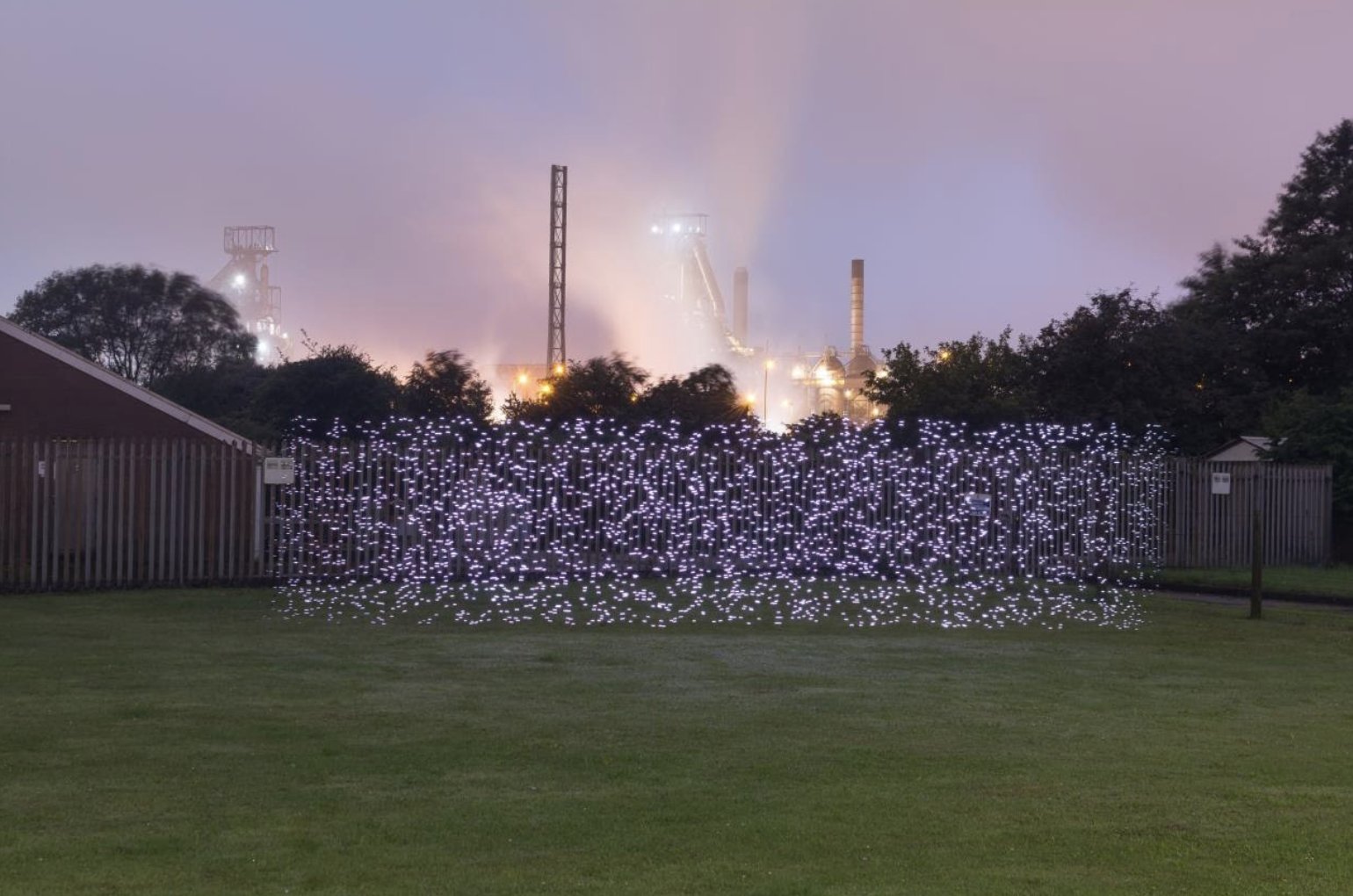30% of London’s Particulate Matter is From Construction Sites
Data collected from industry stakeholders shows that air pollution from construction sites has been steadily on the rise in recent decades. The charity, Impact on...
Read Full Article
Photographs that make invisible air pollution visible have been published, demonstrating the health risks posed to people living and working in Ethiopia, India, and the UK.
The project was created by artist Robin Price and University of Birmingham environmental scientist Professor Francis Pope, using digital light painting and pollution sensors. The sensors measure PM (particulate matter) mass concentrations, taking the sensors’ real-time signals to control a moving LED array programmed to flash more rapidly as PM concentration increases. A long exposure photograph is taken with the artist moving the LED array in front of the camera and the flash becoming a dot on the photograph.
According to the World Health Organisation (WHO), particulate matter affects people more than any other pollutant, and causes health impacts even at very low concentrations. Because of the small size of PM10’s particles, they can penetrate and lodge deep inside the lungs, contributing to the risk of developing cardiovascular and respiratory diseases, as well as lung cancer.
Air pollution is considered one of the main threats to both the environment and human health and a leading cause of death globally. WHO estimates 99 per cent of the global population breathe polluted air, causing approximately 7 million premature deaths worldwide each year.
Professor Pope said: “Air pollution is the leading global environmental risk factor. By painting with light to create impactful images, we provide people with an easy-to-understand way of comparing air pollution in different contexts - making something that was largely invisible visible.”
Large variations in air pollution were demonstrated around the Port Talbot steelworks, in Wales. Air quality monitoring and light painting at dusk in summer measured PM2.5 concentrations in the range of 30-40 mg/m3, when the hourly average value was 24 mg/m3.
Air pollution varied dramatically between locations in Ethiopia. A kitchen using biomass stoves for food preparation where PM2.5 concentrations in the room were up to 20 times greater than what was measured nearby outdoors.
.jpeg)
Picture: a photograph that shows a person working inside a kitchen in Ethiopia using a biomass stove, showing a large concentration of LED lights. Image Credit: Robin Price
Pollution was measured at two children’s playgrounds in India, 500 km apart, one in urban Delhi, the other in rural Palampur. The Palampur playground reported PM2.5 values – at least 12.5 times less than those measured in Delhi.

Picture: a photograph of a children's playground with swings and a slide, showing a large concentration of LED lights. Image Credit: Robin Price
The collection of photographs, called “Nature Communications Earth & Environment” is part of the ‘Air of the Anthropocene’ project, which has been used to raise air pollution awareness by UN International Organisation for Migration (IOM), the Foreign, Commonwealth, and Development Office (FCDO).
Picture: a photograph that shows a field outside Port Talbot steelworks showing a large concentration of LED lights. Image Credit: Robin Price
Article written by Ella Tansley | Published 06 June 2024
Data collected from industry stakeholders shows that air pollution from construction sites has been steadily on the rise in recent decades. The charity, Impact on...
Read Full ArticleTo promote Clean Air Day, environmental activists have offered commuters on London Underground’s Victoria Line access to bottled air from the Lake District via...
Read Full ArticleA report detailing the effects of the first six months of the ULEZ expansion shows that pollutant emissions in 2023 reduced dramatically. In the outer London ULEZ...
Read Full ArticleA trial at the HS2 construction site at Curzon Street has demonstrated that low-cost sensors could determine sources of air pollution. The study, published in npj...
Read Full ArticleFrom 29 August 2023, London’s Ultra Low Emission Zone will expand across all London boroughs – will increased transport costs affect subcontractors working...
Read Full ArticleA survey conducted for Clean Air Day found that 83 per cent of respondents wanted to know more about the air quality inside their homes, 1/6 said they worried about...
Read Full ArticleThe Building Engineering Services Association is marking 2023’s National Clean Air Day with new IAQ training materials. The theme of this year’s Clean Air...
Read Full ArticleChina’s centralised winter heating strategy has helped to prevent over 23,000 fewer premature deaths in 2021 than in 2015, a new study has revealed. From 2015 to...
Read Full ArticleThe Building Engineering Services Association (BESA) says it is surprised that changes to pollution laws announced by the government ignore the importance of indoor air...
Read Full ArticleClean Air Day is the UK's largest air pollution campaign, bringing together communities, businesses, schools and the health sector. Watch the...
Read Full Article